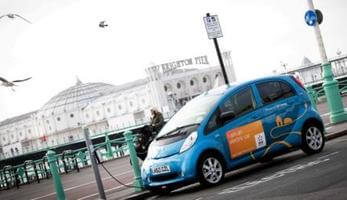Electric vehicle charging points
Thematic areas
Summary
Electric vehicles produce zero emissions on the road, which constitues a substantial advantage over conventionally powered vehicles in terms of air quality. Brighton & Hove installed on-street electric vehicle charging points to test if this would increase take-up of electric vehicles in the city.
Implementing sustainable mobility
This measure involved the installation of 8 electric vehicle charging points, on-street in Brighton & Hove, and was the first of its type in the UK.
The charging points are all powered by sustainably generated electricity.
The measure helped to realise the potential for densely located fuelling stations to impact on the take up of alternative fuels, and tested the belief that scarcity of supply is holding back the wider take up of electrically powered vehicles.
Research was conducted in summer 2009 which indicated there was only one company in the UK, Elektromotive Ltd, who had experience of installing on-street EV charging points.
Progress
Site visits were conducted to look for suitable installation points, primarily looking for sites with high visibility, easy access and safety for users while using the charging points, and the close proximity of an electrical power supply to the proposed site.
The first 4 charging points were installed in September 2009, with a further 4 in January 2011. Registration for membership of the scheme opened in February 2012.
Outcomes
Evaluation for this measure has predominantly focused on monitoring the usage of the scheme, and exploring social awareness and acceptance. Due to slow take-up of the scheme, and the relatively small scale of its impact, indicators on air quality, emissions, and modal shift have proved less significant compared to the social indicators. Calculations of carbon savings from the operation and usage of the scheme have been measured using actual electricity consumption data and conversions based upon national averages (these calculations have been made by Elektromotive).
- 35 registered users of the scheme
- 55% reduction in CO2 emissions (compared to the same usage with non-electric vehicles)
- 35% of registered users use the B&H charging points at least once a week
- 65% of registered users charge their electric vehicles at home, most often
- The shortage of charging points is the factor that registered users like least about electric transport
The importance of the placing of the charging points at locations where they are useful destinations for potential users and will therefore be regularly used.
- Allowing plenty of time for the electrical connections to be made by electricity network suppliers, as this can be the major factor in delaying their becoming live.
- Providing incentives to encourage joining the scheme and use of the charging points, such as free registration and free use of the facilities during the start up period.









